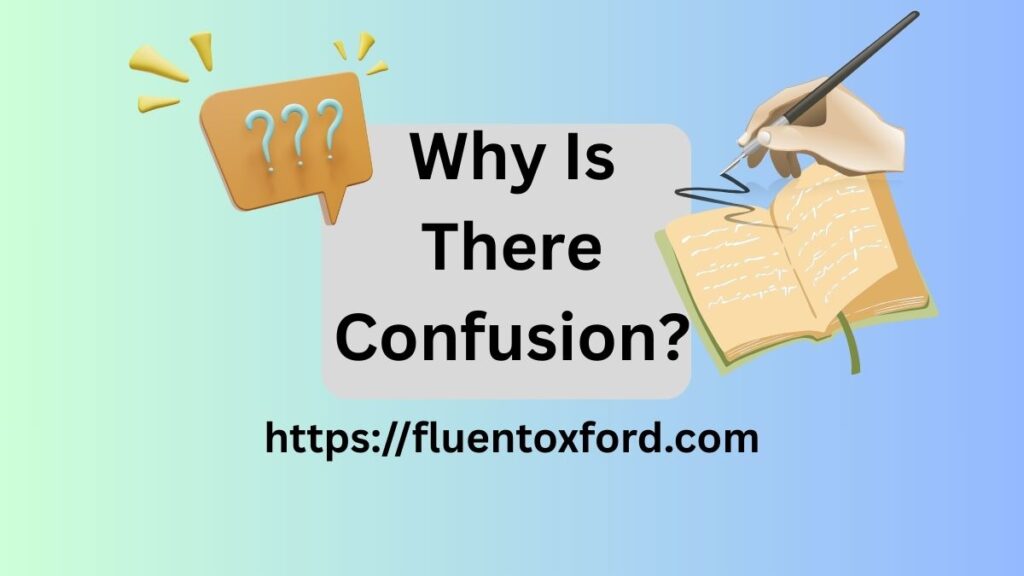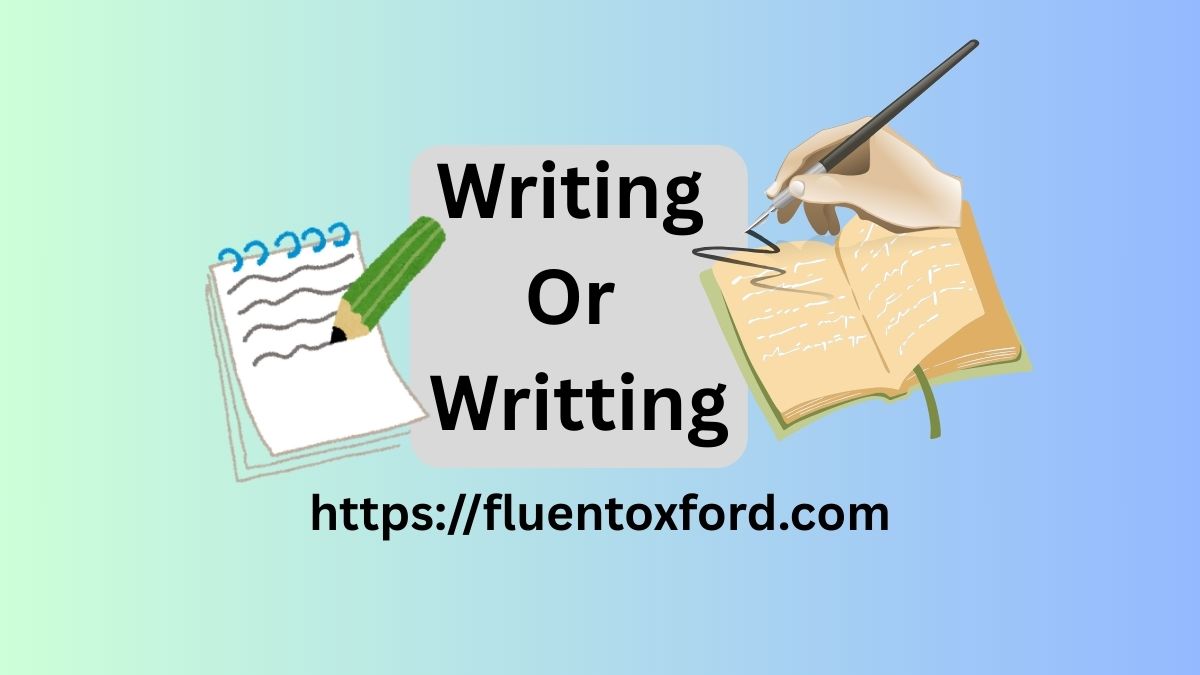Writing Or Writting: Never Get Confused Again refers to the common confusion between the correct spelling, “writing,” and the incorrect “writting.” This mistake often arises due to the misconception that “write” follows the same pattern as verbs like “sit” (sitting) or “run” (running). However, English spelling rules dictate that “write” drops the “e” before adding “-ing” without doubling the “t.” Understanding this distinction is crucial for anyone looking to enhance their writing skills and maintain professional accuracy.
Imagine spending hours crafting a compelling piece, only to have a single misspelled word undermine its credibility. Spelling errors can leave a lasting impression, making your work appear careless or unpolished. Whether you’re a student, professional, or aspiring writer, mastering simple spelling nuances like “writing” versus “writting” can elevate your confidence and ensure your content remains flawless.
Mastering the art of correct spelling not only refines your communication but also strengthens your credibility. Knowing the difference between “writing” and “writting” is just one step toward becoming a more polished and effective writer. In this guide, we’ll break down the rules, provide memorable tricks, and ensure you never second-guess yourself again when choosing the right word.
Why Is There Confusion?

The confusion between writing and writting happens because of how some English words change when adding “-ing.” Many verbs, like “run” (running) and “sit” (sitting), double the last consonant before adding “-ing.” This makes people think “write” should follow the same pattern, leading to the incorrect “writting.” However, “write” is different because it ends in a silent “e.” Instead of doubling the “t,” the “e” is dropped, forming “writing.” Since English spelling rules can be tricky, it’s easy to mix them up. Understanding these patterns helps avoid mistakes and makes spelling easier.
Many English learners—and even native speakers—mistakenly add an extra “t” in “writing.” But why does this happen?
Common Causes of the Error
- English Spelling Rules Are Tricky – The rules for doubling consonants in verbs before adding “-ing” can be confusing.
- Phonetics Plays a Role – The pronunciation of “writing” and similar words can mislead learners.
- Silent “E” Confusion – Many words drop the silent “e” when adding “-ing,” leading to misspellings.
- Pattern Association – Words like “sitting” and “bitting” follow different rules, causing confusion.
“Writing” vs. “Writting”: Which Is Correct?
When choosing between “writing” and “writting,” the correct word is “writing.” The word “writting” is a common misspelling and does not exist in standard English. The mistake happens because some verbs double the final consonant before adding “-ing” (like “running” or “sitting”). However, “write” follows a different rule. Since it ends in a silent “e,” you simply drop the “e” and add “-ing” to form “writing.”
Understanding this spelling rule helps you avoid errors and write with confidence. Whether you’re a student, professional, or casual writer, using “writing” correctly improves clarity and professionalism in your work.
The correct spelling is always “writing”, never “writting.”
| Word | Correct or Incorrect? | Explanation |
| Writing | ✅ Correct | Drops silent “e” before “-ing” without doubling “t.” |
| Writting | ❌ Incorrect | Incorrectly doubles “t,” violating standard English rules. |
Simple Trick to Remember
If the base verb ends in a silent “e”, simply drop the “e” before adding “-ing.” There’s no need to double the consonant unless the verb follows a short vowel pattern (e.g., “run” → “running”).
The Grammar Rule Behind “Writing”

The grammar rule behind “writing” follows a simple spelling pattern. When a verb ends in a silent “e,” you drop the “e” before adding “-ing.” This is why “write” becomes “writing,” not “writting.” Unlike verbs like “run” (running) or “sit” (sitting), which double the last consonant, “write” does not follow that rule because the stress is not on the final syllable.
Understanding this helps prevent common spelling mistakes. Mastering this rule improves your writing skills and makes your work look polished. By following this simple guideline, you can always use “writing” correctly and avoid confusion.
Understanding the correct form of “writing” requires knowledge of English grammar rules.
- “Write” is a verb with a silent “e.”
- According to standard English rules, when forming the present participle, you drop the silent “e” before adding “-ing.”
- Since “write” does not end in a single consonant following a single vowel, you do not double the “t.”
Examples of Similar Verbs
| Base Verb | Correct Present Participle | Incorrect Form |
| Write | Writing | Writting |
| Bite | Biting | Bitting |
| Cite | Citing | Citting |
| Love | Loving | Lovving |
Meaning & Usage of “Writing”
“Writing” refers to the act of putting words on paper or a screen to communicate ideas, stories, or information. It is the present participle of “write” and is used in both verb and noun forms. As a verb, it describes the process of creating text, such as “She is writing a book.” As a noun, it refers to written content, like “His writing is excellent.”
Writing is essential in education, business, and creative work. It helps express thoughts clearly and effectively. Understanding its meaning and proper usage ensures strong communication skills in both personal and professional settings.
“Writing” serves as both a verb and a noun depending on context:
- As a verb: “She is writing an essay.”
- As a noun: “His writing skills are impressive.”
Types of Writing
- Creative Writing – Fiction, poetry, storytelling.
- Academic Writing – Essays, research papers.
- Professional Writing – Reports, business communication.
- Technical Writing – Manuals, guides, instructions.
Common Words That Follow the Same Rule as “Writing”
Just like “writing,” many English words follow the rule of dropping the silent “e” before adding “-ing.” Some common examples include “make” → “making,” “take” → “taking,” “come” → “coming,” and “ride” → “riding.” These verbs do not double the last consonant because they end in a silent “e.” Instead, the “e” is removed before adding “-ing.”
This rule helps prevent spelling mistakes and makes learning English easier. Understanding these patterns improves writing skills and ensures proper spelling. By remembering this simple rule, you can avoid errors and write with confidence in everyday communication.
English follows consistent rules when dropping the silent “e” before adding “-ing.” Here are some examples:
| Base Verb | Correct Form |
| Make | Making |
| Take | Taking |
| Drive | Driving |
| Give | Giving |
Synonyms & Related Terms
“Writing” has many synonyms that vary based on context:
- For general use: Composing, drafting, scripting.
- For professional use: Documenting, authoring, editing.
- For storytelling: Narrating, storytelling, describing.
Example Sentences Using “Writing”
- She enjoys writing poetry in her free time.
- Improving your writing skills takes practice.
- His handwriting makes his writing difficult to read.
- Professional writing requires clarity and precision.**
- Students often make spelling errors in their writing.
Etymology of “Writing”
The word “writing” comes from the Old English “writan,” meaning “to score, outline, or inscribe.” It later evolved to mean “to record words.” The root traces back to Proto-Germanic “writaną” and further to Proto-Indo-European “wreid-“ (to cut or scratch). Over time, “writing” became the standard term for expressing language through written symbols.
The word “writing” comes from the Old English word “writan”, meaning “to inscribe, mark, or draw.”
- Old English: Writan (to mark, draw, inscribe).
- Middle English: Writen (to write text or inscriptions).
- Modern English: Write → Writing (following standard English rules).
Quick Recap & Final Tips
- Correct spelling: “Writing.”
- Incorrect spelling: “Writting.”
- Grammar rule: Drop the silent “e” before adding “-ing.”
- No need to double the “t” because “write” doesn’t follow the doubling consonants rule.
- Tip: If the verb ends in “e,” remove it before adding “-ing.”
Conclusion
Mastering the difference between Writing or Writting: Never Get Confused Again is simple once you know the rule. “Writing” is correct, while “writting” is a mistake. Remember, verbs like “write” drop the silent “e” before adding “-ing” without doubling the “t.” Paying attention to small details like this improves your writing skills and helps you look more professional.
By understanding Writing or Writting: Never Get Confused Again, you can avoid common spelling mistakes. Strong writing builds confidence and makes a great impression on readers. Whether you’re writing emails, essays, or creative content, spelling correctly shows that you care about your work. Keep practicing, and soon, spelling errors will be a thing of the past!
Here are five FAQs with updated, concise answers:
FAQs
1. Why is “writing” correct and “writting” incorrect?
“Writing” follows the English grammar rule of dropping the silent “e” before adding “-ing,” while “writting” incorrectly doubles the “t.”
2. Does English ever double consonants before adding “-ing”?
Yes, but only when the word follows a short vowel + consonant pattern (e.g., “run” → “running”). Since “write” ends in a silent “e,” this rule doesn’t apply.
3. How can I avoid common spelling mistakes like “writting”?
Learn standard English rules, practice regularly, and use spell-check tools. A quick trick: if the verb ends in silent “e”, just drop the “e” before adding “-ing.”
4. What are other words that follow the same rule as “writing”?
Words like “making,” “taking,” “giving,” and “citing” all drop the silent “e” before adding “-ing.”
5. Is “writing” a verb or a noun?
It can be both! As a verb, it means the act of forming words (e.g., “She is writing an email”). As a noun, it refers to text or composition (e.g., “His writing skills are excellent”).

As an admin at Fluent Oxford, Maida Queen is the driving force behind our vibrant learning community. With a deep passion for English language education, she ensures that our platform remains a dynamic, engaging, and supportive space for learners worldwide.
Maida expertly manages content, assists users with their grammar and fluency queries, and fosters an interactive environment where learning feels effortless and enjoyable. Whether you need guidance, motivation, or just a friendly face in the Fluent Oxford community, Maida is always there to help you reach your English language goals.








